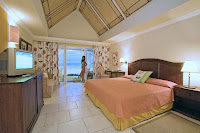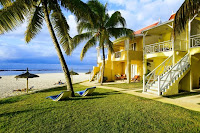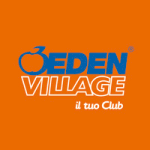 Flic en Flac
Flic en Flac north of Tamarin, near the pretty village of Flic en Flac, is the Eden Village Villas Caroline overlooking one of the most beautiful beaches of the Indian Ocean, close a beautiful coral reef rich and colorful backdrops. This is the only island where the clear blue sea can be enjoyed all year round. The structure is very pleasant and welcoming and provides a feeling of profound well-being, ideal for those seeking peace and quiet and wants to be lulled by a soft and relaxed. During the day, and to dive in sea bathing and sun, you can swim in the pool, snorkeling, pedal boats and kayaks to use and to make excursions by sea and by land. When evening comes, before getting distracted by the entertainment programs and shows of local dance, you can see the warm colors of sunset and intense tropical ocean. The gourmets can enjoy international dishes at the main restaurant, but also to discover the culinary tradition of Mauritius, into which Creole dishes, French sophistication and oriental perfumes. Designed to make you forget all the tension and lead to a dimension of absolute relaxation, the Spa Chamarelle is a pleasant intimate and warm tones, where massages, beauty treatments and steam baths oriental essences become true rituals to restore the body and energy and serenity in mind.
-
Location: Flic en Flac
, 30 minutes from the capital Port Louis and 20 minutes from Quatre Bornes.
Restaurants and bars:
main restaurant with local specialties and Italian chef. A payment restaurant specializing in seafood and Indian. Two bars, one on the beach. The time for lunch and dinner in the restaurant of Eden Village can also be a nice opportunity to get together with the leaders or the other guests and share stories and emotions in an atmosphere of friendliness and conviviality.
Rooms:
located in bungalows along the beach in the garden and all equipped with air conditioning, LCD TV, screen and keyboard for Internet access (surcharge), telephone, mini bar (payable on location), coffee coffee and tea, private bathroom, veranda or balcony. They are divided into 48 superior ocean with a safe, bathroom, double bed and possibility of extra bed, ocean 20, with double bed, bathroom with shower, safe deposit box at reception, 4 bungalows with bedroom and kitchen living room with single bed, bathroom with tub and shower, 2 deluxe sea view double room with private bath, plus another bedroom with twin beds and bathroom with shower, 1 Junior suite with large master bedroom with sitting room, large bathroom with jacuzzi , large terrace with table for breakfast, all with sea view, 2 double rooms with views of young car smaller compared with other types of rooms. Services: reception, safety deposit boxes. Fee: car rental, internet, babysitting service, laundry and medical service upon request.
relaxation and enjoyment
swimming pool with deck chairs and beach towels. Fee: Chamarelle Spa offers spa massage, beauty treatments and steam baths oriental essences; diving center affiliated to CMAS (World Confederation of Sub-Aquatic Activities), pedal boats, kayaks, sea and land excursions, mini cruises with glass bottom, water skiing, deep sea fishing, snorkeling equipment, golf (nearby).
Animation:
entertainment program includes live music, evening entertainment, daily entertainment shows, Sega (typical local dance), disco under the stars. Sports such as beach volleyball, beach tennis, beach soccer, bowling, table tennis and snorkeling. Mini club 4 / 12 years at fixed hours.
Beach:
white sand beach umbrellas, deck chairs and beach towels included.
Credit cards:
accept major credit cards.
-
February 25 € 1,672
08, 11, 15, 18, 22, 25 and 29 March € 1,763
ALL INCLUSIVE PRICE
-
pe r departures early date
-
flight + accommodation + transfers
Departures by special flight from Milan Malpensa or Rome
treatment in all inclusive - 9 Days / 7 Nights
fuel cost adjustment subject to confirmation
-
| Supplements & Special Units: | |
|---|---|
| SHARE CHILD 2 / 12 YEARS IN 3 BED | € 580 |
click to enlarge




-
-
-
-






